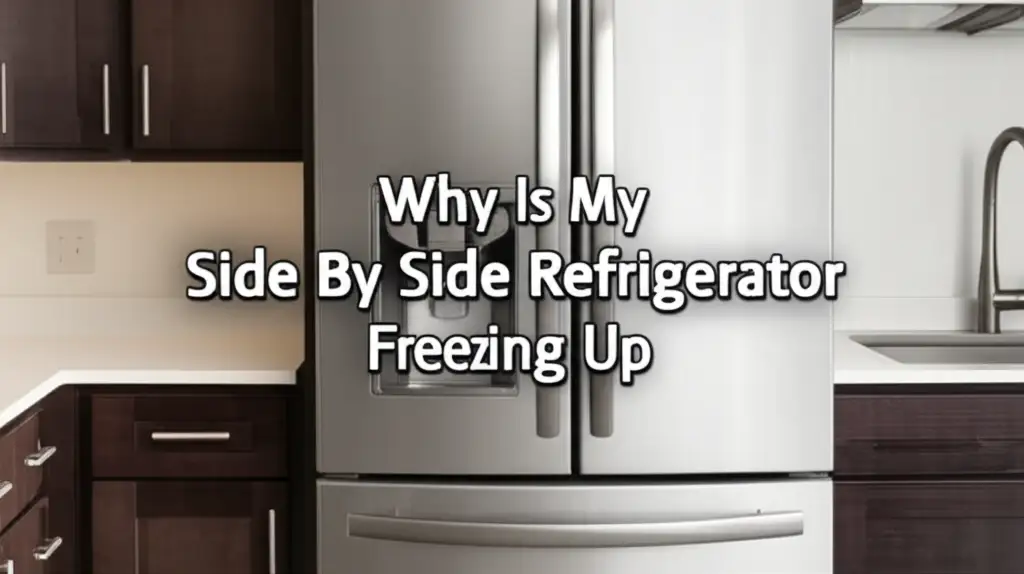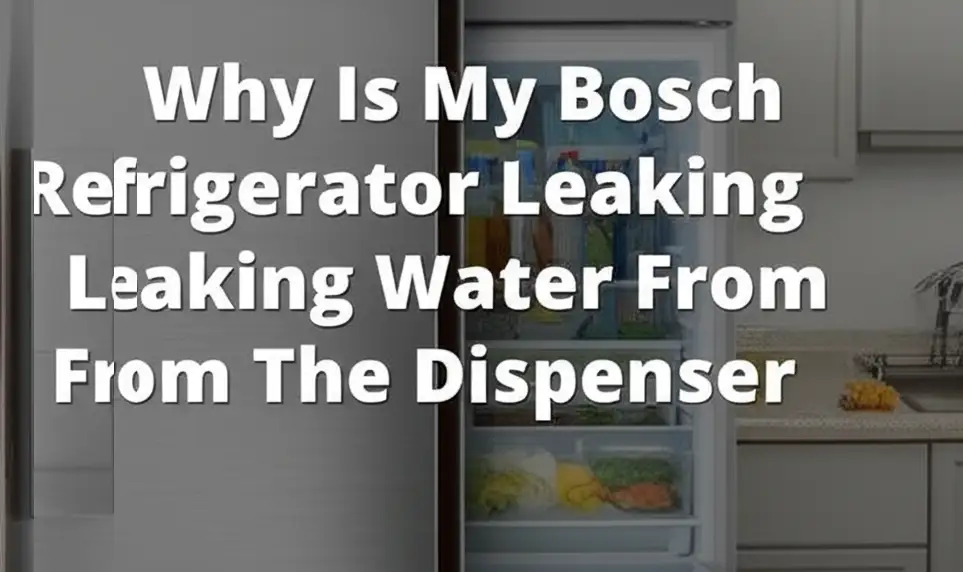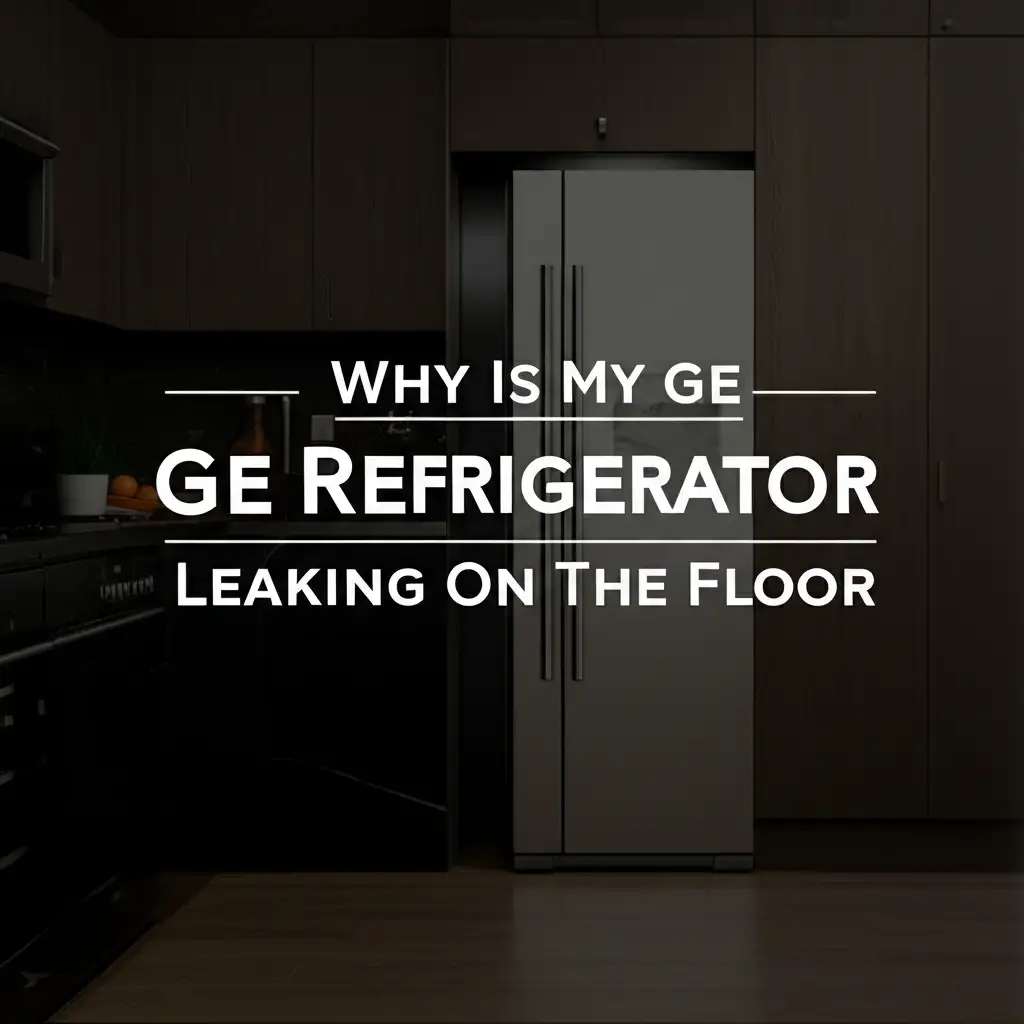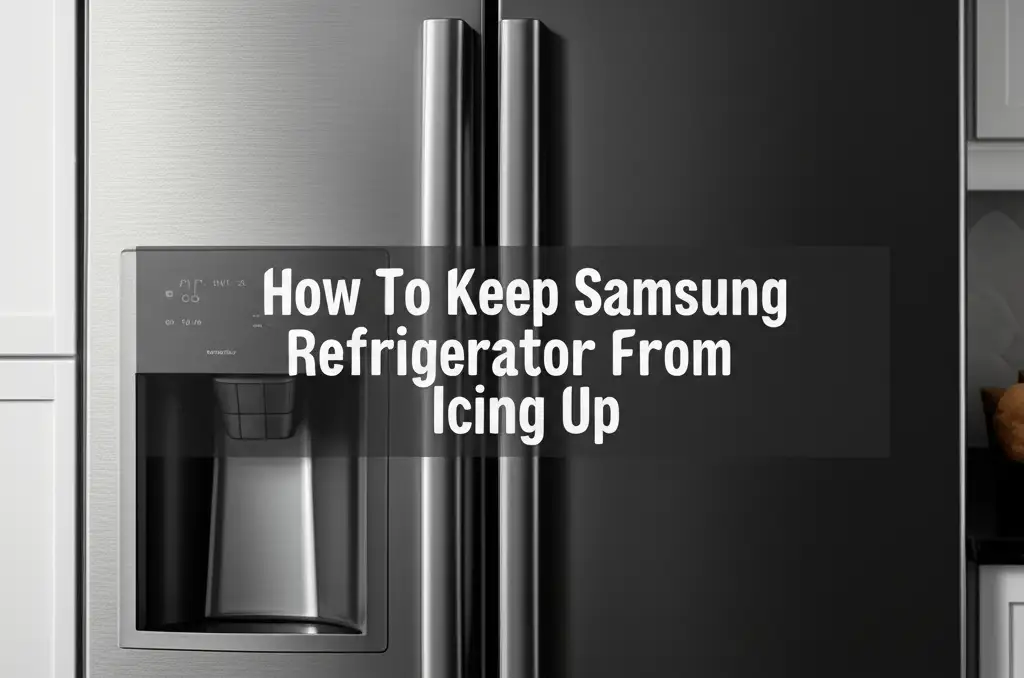· Katria Melrose · Refrigerator Repair · 19 min read
Why Is My Kenmore Bottom Freezer Refrigerator Not Cooling
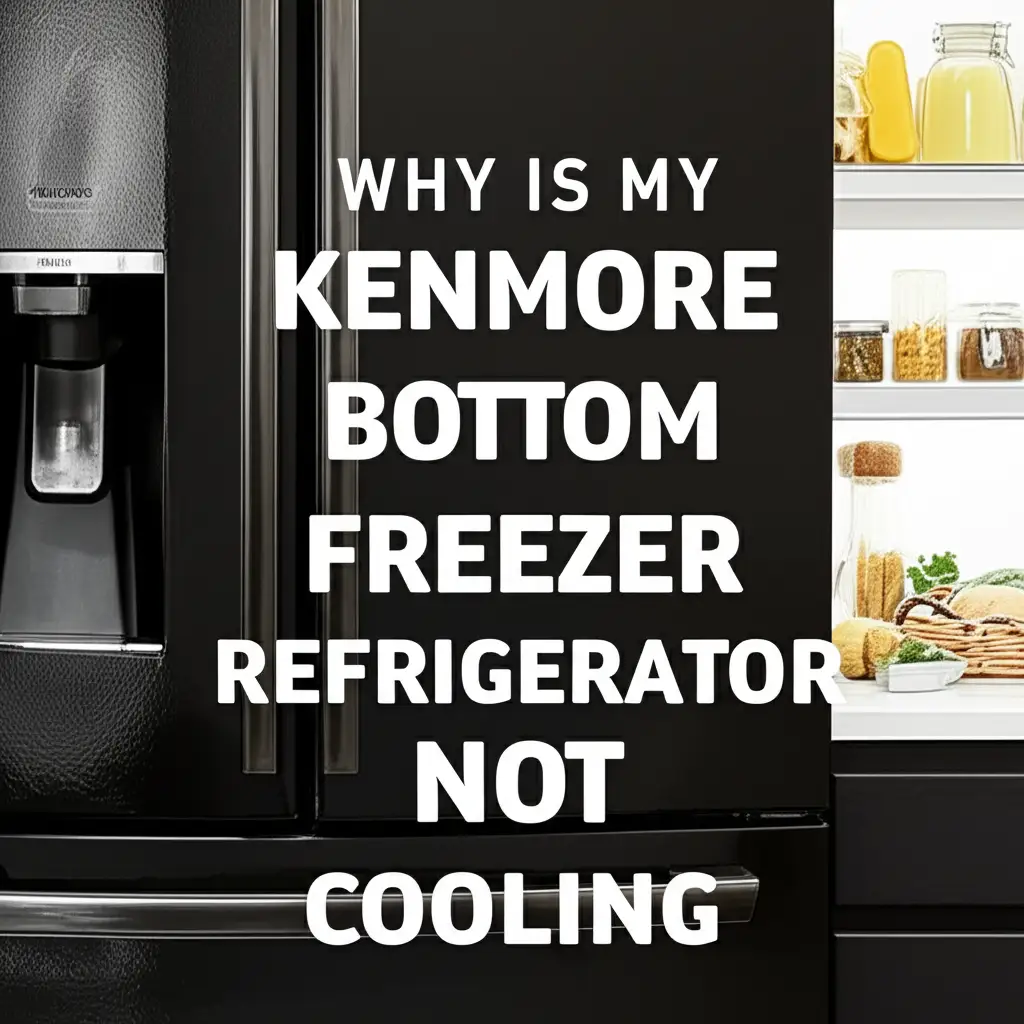
Solving Your Kenmore Refrigerator Not Cooling Problem
It is frustrating when your Kenmore bottom freezer refrigerator stops cooling. Food can spoil quickly. This common issue affects many appliance owners. You need a reliable solution fast.
This article helps you diagnose why your Kenmore bottom freezer refrigerator is not cooling. We will explore common culprits. We provide clear, step-by-step troubleshooting. You can identify the problem and try simple fixes. We aim to get your refrigerator working properly again.
Takeaway
If your Kenmore bottom freezer refrigerator is not cooling, check these common areas first:
- Clean Condenser Coils: Dust buildup prevents heat dissipation.
- Inspect Evaporator Fan: It moves cold air from the freezer to the fridge.
- Defrost System: Ice buildup can block airflow or affect cooling components.
- Damper Control: This part regulates airflow between sections.
- Door Seals: Gaps allow warm air entry.
Your Kenmore bottom freezer refrigerator is not cooling usually because of dirty condenser coils, a blocked evaporator fan, or a malfunctioning defrost system. Other issues include a faulty damper, a defective thermostat, or a broken compressor. Identifying the exact cause helps you fix the issue quickly.
Understanding Your Kenmore Bottom Freezer Refrigerator’s Cooling Process
Your Kenmore bottom freezer refrigerator cools food through a specific cycle. Refrigerant moves through coils inside the unit. The compressor starts this process. It compresses the refrigerant gas. This gas gets hot and moves to the condenser coils.
The condenser coils are usually at the back or bottom of the fridge. They release heat into your kitchen. The refrigerant then turns into a liquid. This liquid flows through an expansion valve. It turns into a cold, low-pressure gas inside the evaporator coils.
The evaporator coils are in the freezer compartment. A fan blows air over these cold coils. This fan circulates cold air throughout the freezer. Some of this cold air also moves into the fresh food compartment. It travels through specific air vents. A functional cooling system relies on each part working correctly.
This design means a problem in one area can stop the whole refrigerator from cooling. For example, if the freezer cools but the fridge does not, it often points to an airflow issue. Or, if neither section cools, a major component like the compressor or sealed system may have failed. Understanding this cycle helps you pinpoint the problem. Proper airflow and heat exchange are vital for effective cooling.
Addressing Dirty Condenser Coils Affecting Cooling
Dirty condenser coils are a very common reason a Kenmore bottom freezer refrigerator is not cooling. These coils sit on the back or underneath your refrigerator. Their job is to release heat from the refrigerant. If dust and debris cover them, they cannot release heat effectively.
This makes the compressor work harder. The refrigerator struggles to cool properly. You might notice the compressor running more often. The fridge section will feel warm. Cleaning these coils is a simple first step in troubleshooting.
How to Clean Condenser Coils
Cleaning condenser coils is straightforward. First, unplug your refrigerator for safety. This prevents electric shock. You need a coil brush, a vacuum cleaner with an attachment, and a flashlight.
- Locate the Coils: Most Kenmore bottom freezer models have coils at the bottom. You may need to remove a kick plate or a grille. Use your flashlight to see them. Some older models have coils on the back.
- Brush Away Dust: Use a long, narrow coil brush to reach between the coils. Gently brush away all visible dust and lint. Be thorough, as dust accumulates easily.
- Vacuum Debris: Use your vacuum cleaner’s hose attachment to suck up the loosened debris. Make sure no dust remains on the coils or in the surrounding area.
- Clean the Area: Also, vacuum the floor underneath the refrigerator. This helps prevent new dust buildup. You can learn more about how to clean under a refrigerator for best results.
- Restore Power: Once clean, replace any panels or grilles. Plug the refrigerator back in. Give it several hours to cool down completely.
Regular cleaning prevents future cooling issues. I recommend cleaning condenser coils every 6 to 12 months. This maintains your refrigerator’s efficiency. It also extends its lifespan.
Inspecting Evaporator Fan Motor for Cooling Issues
A faulty evaporator fan motor is another frequent cause of a Kenmore bottom freezer refrigerator not cooling. This fan lives inside your freezer compartment. Its main job is to circulate cold air over the evaporator coils. It then pushes that cold air into both the freezer and fresh food compartments.
If the evaporator fan motor breaks down, cold air cannot move effectively. You might notice the freezer is cold, but the refrigerator is warm. This happens because the freezer has cold air, but it cannot reach the fridge section. This is a classic symptom for “freezer works but fridge doesn’t” scenarios. Many refrigerators, including Kenmore, Frigidaire, GE, and KitchenAid models, share this common issue. You can compare common symptoms with other brands if your GE refrigerator is not cooling but the freezer is working. Similarly, if you experience issues where your Frigidaire refrigerator is not cooling but the freezer works, the evaporator fan is a key suspect. Even if your KitchenAid refrigerator is not cooling but the freezer is fine, the diagnosis often points to this critical component.
How to Check the Evaporator Fan
Checking the evaporator fan requires some access to the freezer. Always unplug the refrigerator first. Safety is key before any DIY repair.
- Access the Freezer Compartment: Empty your freezer. Remove shelves and drawers. You will need to remove the back panel inside the freezer. This panel covers the evaporator coils and fan. You might need a screwdriver.
- Inspect for Ice Buildup: Look for excessive ice around the evaporator coils and fan. Ice can restrict the fan blades from spinning. If you see ice, a defrost issue might be the main problem. We will cover defrost issues next.
- Test the Fan: Once clear of ice, plug the refrigerator back in. Open the freezer door. Press the door switch to simulate a closed door. This should turn on the fan. Listen for the fan running. If you hear nothing or a grinding noise, the motor is likely bad.
- Manual Spin Test (Unplugged): Unplug the refrigerator again. Try to spin the fan blades by hand. They should spin freely. If they are stiff or obstructed, something is blocking them.
If the fan does not spin or makes unusual noises, it likely needs replacement. A new evaporator fan motor will restore cold air circulation. It ensures your fresh food section cools properly again.
Checking the Defrost System for Blockages
The defrost system prevents ice buildup on the evaporator coils. A Kenmore bottom freezer refrigerator not cooling can often stem from a faulty defrost system. If ice covers the evaporator coils, air cannot pass over them. This means no cold air circulates into your refrigerator.
The defrost system has several parts. These include the defrost heater, the defrost thermostat, and the defrost timer or control board. If any part fails, ice builds up. This leads to poor cooling in the fresh food section. Sometimes, the freezer might still feel cold because the ice is near the coils, but cold air cannot escape. You may experience similar issues if your Kenmore refrigerator does not cool but the freezer works.
How to Diagnose Defrost System Problems
Diagnosing a defrost issue involves checking these components. Always start by unplugging your refrigerator.
- Inspect Evaporator Coils for Ice: This is the first visual check. Open the freezer, remove the back panel. If the evaporator coils are completely covered in a thick layer of ice, the defrost system is failing.
- Test the Defrost Heater: The defrost heater melts ice off the coils. Use a multimeter to check for continuity. No continuity means the heater is bad.
- Check the Defrost Thermostat: This small clip-on sensor controls when the heater turns on. It closes when cold enough. Test for continuity when it is cold (e.g., in a cup of ice water). No continuity indicates a faulty thermostat.
- Examine the Defrost Timer/Control Board: The timer cycles the defrost heater on and off. If it is stuck in the cooling cycle, the heater will not activate. Some modern fridges use a main control board instead of a mechanical timer. You may need a technician to test the control board.
If you find significant ice buildup, manually defrost the refrigerator first. Unplug the fridge for 24-48 hours with the doors open. This melts all ice. Then, plug it back in. If the problem returns within a few days, a component in the defrost system needs replacement. Addressing ice buildup can also involve understanding how to clean your freezer thoroughly.
Troubleshooting Faulty Damper Control or Air Vents
Your Kenmore bottom freezer refrigerator uses a damper control. This device regulates the airflow between the freezer and fresh food compartments. If this damper gets stuck closed, no cold air reaches the refrigerator section. The freezer will remain cold, but the fridge will warm up.
Sometimes, the damper is controlled by a thermostat or a main control board. Other times, it’s a mechanical part that opens and closes based on temperature. Blocked air vents can also cause similar problems. Items stored too close to vents can stop airflow. This prevents proper cooling in the refrigerator.
Steps to Check Damper Control and Vents
Checking these components requires attention to detail. Always unplug the refrigerator before working inside.
- Locate the Damper: The damper is usually between the freezer and fresh food sections. It might be behind a panel inside the fresh food compartment. Refer to your owner’s manual for its exact location.
- Inspect for Obstructions: Look for anything blocking the damper’s movement. It could be food packaging or ice buildup. Clear any obstructions gently.
- Test Damper Operation: If you can access the damper, manually move it. It should open and close freely. If it feels stiff or won’t move, it might be faulty. On electronic dampers, you might hear a small motor. If no sound, the motor may be bad.
- Check Air Vents: Ensure no food items block the air vents inside both compartments. Cold air needs to circulate freely. Check both the supply vents (where cold air comes out) and return vents (where warm air goes back).
- Examine for Broken Parts: Look for any visible damage to the damper or its housing. A broken damper part means it cannot regulate airflow.
If the damper control unit is broken or stuck, it often needs replacement. This allows proper cold air distribution. Ensuring clear vents is a simple fix that often gets overlooked.
Examining the Thermostat and Temperature Control
The thermostat acts as the brain of your Kenmore refrigerator’s cooling system. It monitors the internal temperature. When the temperature rises above the set point, the thermostat signals the compressor and fans to turn on. If your Kenmore bottom freezer refrigerator is not cooling, a faulty thermostat is a possible cause.
A broken thermostat might not send the signal to start cooling. The refrigerator will stay warm. Or, it might send a constant signal, leading to overcooling (though less likely for a “not cooling” symptom). Digital temperature controls on newer models work similarly but use electronic sensors.
How to Test Your Refrigerator’s Thermostat
Testing a thermostat often requires a multimeter. Remember to unplug the refrigerator first for safety.
- Locate the Thermostat: The thermostat control knob or panel is usually inside the fresh food compartment. The actual thermostat sensor might be behind the control panel or near the evaporator coils.
- Check Settings: First, ensure the temperature setting is correct. Sometimes, someone accidentally sets it to “off” or a high temperature. Turn the dial to the coldest setting. Wait a few hours to see if cooling improves.
- Bypass Test (for mechanical thermostats): For mechanical thermostats, you can try bypassing it temporarily. This is for testing only. Unplug the refrigerator. Disconnect the two wires leading to the thermostat. Connect these two wires together with a wire nut. This creates a continuous circuit.
- Observe Cooling: Plug the refrigerator back in. If the compressor and fans turn on and the fridge starts cooling, the thermostat is bad. Unplug immediately after testing and remove the bypass. Never leave the thermostat bypassed long-term.
- Test with Multimeter: For a more precise test, use a multimeter to check for continuity through the thermostat at various temperature settings. It should show continuity when turned to a cold setting and no continuity when off or very warm.
If the thermostat is faulty, replacing it is usually straightforward. Always use an exact replacement part for your Kenmore model. This ensures proper temperature regulation.
Evaluating the Condenser Fan Motor and Compressor
These two components are central to your Kenmore refrigerator’s cooling process. The condenser fan motor works with the condenser coils. It draws air over the coils to dissipate heat. If this fan fails, the coils cannot release heat effectively. This causes the compressor to overheat. The refrigerator will then struggle to cool.
The compressor is the heart of the sealed cooling system. It compresses the refrigerant gas, initiating the cooling cycle. If the compressor fails, no cooling will occur at all. Your Kenmore bottom freezer refrigerator will be completely warm, both in the fridge and freezer sections. A buzzing noise without cooling is a sign of a struggling or failed compressor.
Diagnosing Condenser Fan and Compressor Issues
These components are typically at the back or bottom of the refrigerator. Always unplug the unit before inspection.
Check the Condenser Fan Motor:
- Access: Remove the back service panel or kick plate at the bottom front.
- Visual Inspection: Look for debris, dust, or wiring issues around the fan blades.
- Manual Spin: With the power off, try to spin the fan blades by hand. They should spin freely. If stiff, something is blocking them, or the motor bearings are seized.
- Test Operation: Plug the fridge in (carefully!). The condenser fan should run when the compressor runs. If the fan does not spin, but the compressor is humming, the fan motor is likely bad.
- Sometimes, other brand refrigerators also face similar issues, for instance, if your Maytag refrigerator freezer is not getting cold, checking the condenser fan and compressor would be crucial.
Check the Compressor:
- Listen: When the refrigerator should be cooling, listen for a low hum from the compressor. If you hear a loud buzzing, clicking, or nothing at all, the compressor may have failed.
- Feel for Heat: Gently touch the compressor (be careful, it can be hot!). A working compressor will be warm to hot. If it’s cold and silent, it is not running.
- Overload Protector/Start Relay: The compressor often has an overload protector or a start relay attached. These can fail. A clicking sound often indicates a faulty start relay trying to engage the compressor. Testing these usually requires a multimeter and expertise.
Replacing a condenser fan motor is possible for a DIYer. However, a faulty compressor or a problem with the sealed system (refrigerant leak) requires a professional technician. These are complex repairs involving specialized tools and refrigerants.
Addressing Other Potential Causes for Poor Cooling
While the main components cause most cooling issues, other factors can make your Kenmore bottom freezer refrigerator not cooling effectively. These are often simpler to check and fix. Overfilling, door seal problems, or even a faulty control board can prevent proper temperatures.
Common Secondary Issues
Consider these additional points if the primary checks do not solve your problem.
Overfilling Your Refrigerator:
- Packing too many items inside blocks airflow. Cold air needs space to circulate. If shelves are overloaded, air cannot reach all parts of the compartment.
- Remove some items to create space. Check if this improves cooling. Rearrange food for better circulation.
Damaged Door Seals:
- The door gaskets (seals) create a tight barrier. If they are torn, cracked, or worn, warm air leaks into the fridge. This makes the compressor work constantly.
- Test seals by closing the door on a dollar bill. If you can pull the bill out easily, the seal is weak. Clean seals regularly. Replace damaged ones.
Improper Temperature Settings:
- Double-check your thermostat or digital control settings. Ensure it is set to a cold enough temperature, usually between 37°F and 40°F (3°C to 4°C) for the fresh food section.
- Sometimes, kids or family members accidentally change settings.
Control Board Malfunctions:
- Modern Kenmore refrigerators use electronic control boards. These boards manage all functions. A faulty board can send incorrect signals to cooling components.
- Symptoms can vary widely. If all other checks fail, a technician can test the control board. This is generally a replacement part, not a repairable one.
Water Filter Issues:
- While not directly related to cooling, a clogged water filter can affect water dispenser and ice maker function. This will not stop the refrigerator from cooling, but some owners might confuse symptoms. It is good practice to ensure your Kenmore bottom freezer refrigerator water filter is changed regularly.
Ambient Temperature:
- Refrigerators work best in a consistent room temperature. If your garage gets extremely hot or cold, it affects performance. Ensure proper ventilation around the unit.
Addressing these smaller issues can sometimes solve your Kenmore bottom freezer refrigerator not cooling problem. Always consider these simple checks before moving to complex repairs.
When to Call a Professional for Your Kenmore Refrigerator
While many Kenmore bottom freezer refrigerator issues are fixable by a diligent homeowner, some problems require professional help. Knowing when to call a technician saves time, prevents further damage, and ensures safety. If you have followed the troubleshooting steps and your refrigerator still isn’t cooling, it’s time for expert intervention.
Situations Requiring Professional Assistance
Here are specific scenarios where a professional appliance repair technician is necessary:
- Sealed System Problems: This includes issues with the compressor, evaporator, condenser, or refrigerant lines. Diagnosing and repairing these requires specialized tools and EPA certification to handle refrigerants. If you suspect a refrigerant leak or a completely dead compressor, call a pro.
- Control Board Failure: While you can check basic functionality, diagnosing a complex control board issue is difficult without specific knowledge and diagnostic tools. Replacing a control board is often expensive. Ensure it is the actual problem.
- Persistent Ice Buildup: If you manually defrost your Kenmore refrigerator, and ice quickly re-forms on the evaporator coils, a defrost system component (heater, thermostat, or timer/board) is faulty. While you can replace some parts, persistent issues suggest a deeper problem.
- Electrical Issues Beyond Simple Fixes: If you detect burning smells, tripped breakers specifically for the fridge, or unusual electrical noises, do not attempt to fix it yourself. These can be dangerous.
- Lack of Expertise or Tools: If you do not feel comfortable working with electrical components or dismantling parts of your refrigerator, it is always safer to hire a professional. Appliance repair involves electrical risks and heavy components.
- Warranty Considerations: If your Kenmore refrigerator is still under warranty, attempting DIY repairs might void it. Check your warranty terms before proceeding.
A qualified technician can quickly diagnose complex problems. They have the right tools and parts. They ensure your Kenmore bottom freezer refrigerator gets back to cooling safely and efficiently. Always choose a reputable service provider for appliance repairs.
FAQ Section
Q1: Why is my Kenmore freezer cold but the refrigerator not cooling?
A common reason your Kenmore freezer is cold but the refrigerator is not cooling is a faulty evaporator fan motor. This fan circulates cold air from the freezer into the fresh food section. If it breaks or is blocked by ice, cold air cannot reach your fridge. Another cause is a blocked or malfunctioning damper control, which regulates airflow between the two compartments.
Q2: How long does it take for a Kenmore refrigerator to get cold after cleaning coils?
After cleaning your Kenmore refrigerator’s condenser coils, it typically takes 4 to 8 hours for the refrigerator to reach its set temperature. If the coils were very dirty, the refrigerator worked harder than usual. It needs time to dissipate built-up heat and bring the internal temperature down. Allow a full 24 hours to see complete temperature stabilization.
Q3: Can a dirty door seal cause my Kenmore refrigerator not to cool?
Yes, a dirty or damaged door seal can definitely cause your Kenmore refrigerator not to cool effectively. Gaps in the door gasket allow warm air from your kitchen to constantly leak into the refrigerator compartment. This makes the compressor run almost continuously, struggling to maintain the correct temperature. Check and clean or replace damaged seals.
Q4: What are the signs of a failing compressor in my Kenmore refrigerator?
Signs of a failing compressor include the refrigerator not cooling at all (both fridge and freezer are warm), a loud buzzing or clicking noise from the back of the unit without any cooling, or a completely silent compressor when it should be running. The compressor might also feel unusually hot. These issues often require professional repair.
Q5: Should I try to manually defrost my Kenmore bottom freezer refrigerator?
Yes, manually defrosting your Kenmore bottom freezer refrigerator can be a helpful diagnostic step. If you see excessive ice buildup on the evaporator coils, unplugging the unit for 24-48 hours with the doors open will melt it. If the refrigerator then cools properly for a few days before ice re-forms, it confirms a problem with the automatic defrost system.
Q6: Can overpacking my Kenmore refrigerator affect its cooling?
Yes, overpacking your Kenmore refrigerator significantly affects its cooling performance. Overfilling restricts proper airflow inside the fresh food compartment. Cold air needs space to circulate around items to maintain an even temperature. When vents are blocked or shelves are too full, cold air cannot reach all areas, leading to warm spots and inefficient cooling.
Conclusion
When your Kenmore bottom freezer refrigerator is not cooling, it can be a real headache. I understand the concern about food spoilage and the cost of repairs. My goal was to provide you with clear, actionable steps. You can identify and fix the most common reasons behind this problem. From ensuring your condenser coils are spotless to checking the vital evaporator fan, many solutions are within your reach.
Remember to approach each step methodically. Always prioritize safety by unplugging your refrigerator before any inspection or repair. Regular maintenance, such as cleaning coils and checking door seals, extends your appliance’s life. It also prevents future cooling issues. If you have followed these guidelines and your Kenmore refrigerator still struggles, it is okay to call in the experts. A professional technician has the tools and knowledge for complex sealed system or control board repairs. Take action today to restore proper cooling and protect your food. Your Kenmore bottom freezer refrigerator can operate efficiently again with the right approach.
- Kenmore refrigerator
- refrigerator troubleshooting
- bottom freezer
- fridge not cooling
- appliance repair
- DIY repair
- defrost system


